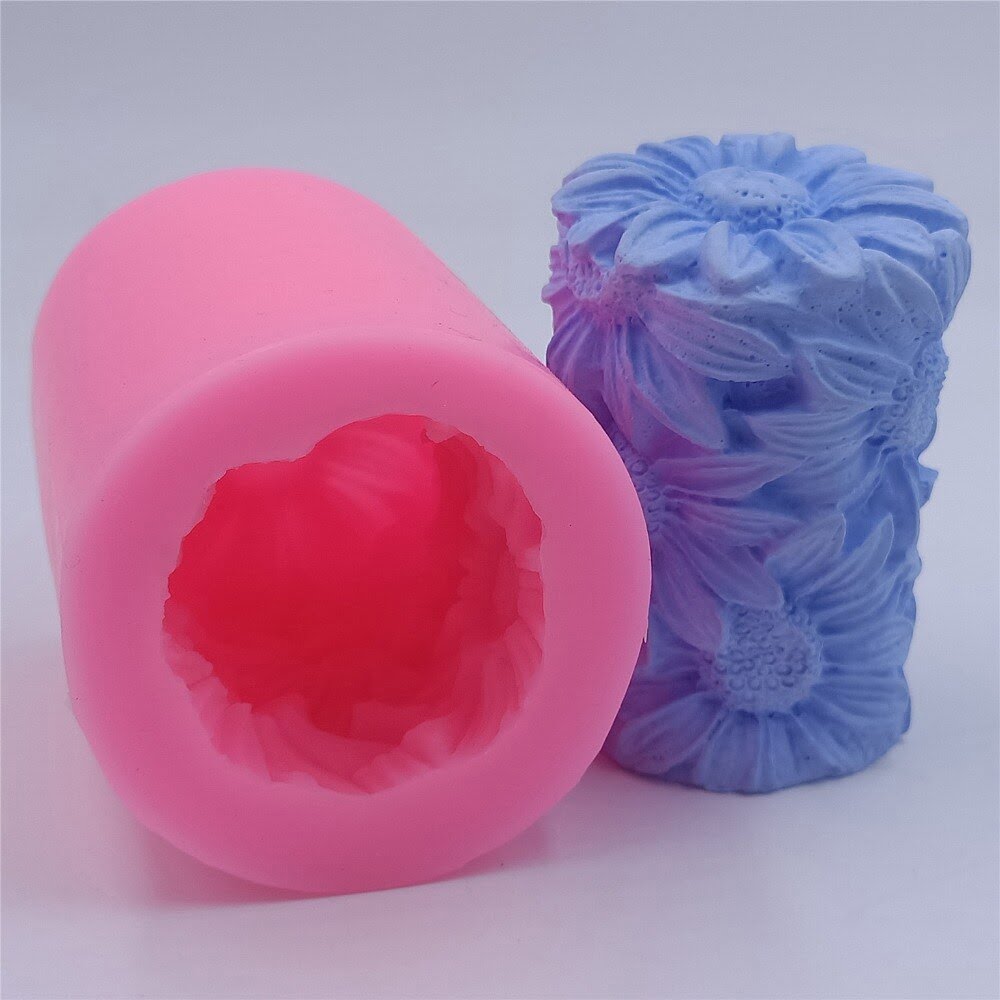The choice between these two natural waxes can greatly impact the outcome of your candles, from their appearance and aroma to their environmental impact. In this article, we will explore the benefits of beeswax and soy wax, compare their advantages, discuss factors to consider when choosing between them, and provide tips for working with each type of wax.
When it comes to candle making, beeswax and soy wax are two popular choices. Beeswax offers natural and sustainable properties along with unique aroma and color options, as well as a clean and long-lasting burn. On the other hand, soy wax is an eco-friendly and renewable source that provides excellent scent retention, ease of fragrance blending, and a smooth and even burn. Both waxes have their own set of advantages that cater to different preferences and needs.
In this article, we will delve deeper into the benefits of beeswax in candle making as well as the advantages of soy wax. We will also compare these two waxes in terms of cost-effectiveness, environmental impact, and versatility in candle design and style.
Additionally, we will discuss important factors to consider when choosing between beeswax and soy wax based on personal preferences, the purpose of the candles, sustainability issues, ethical considerations before providing guidance on how to work with each type of wax in candle making.
The Benefits of Beeswax in Candle Making
Beeswax is a natural and sustainable option for candle making, offering a variety of benefits that make it an attractive choice for candle makers. Below are some of the key benefits of using beeswax in candle making:
- Natural and Sustainable Properties: Beeswax is a natural byproduct of honey production, making it a renewable and eco-friendly option for candles. It is also biodegradable, which is beneficial for the environment.
- Unique Aroma and Color Options: Beeswax has a naturally sweet and honey-like aroma, adding a pleasant scent to the candles without the need for additional fragrances. It also comes in various shades of yellow, depending on its purity, providing options for different color palettes in candle making.
- Clean and Long-lasting Burn: Beeswax candles burn cleaner than paraffin wax, with no toxins or pollutants released into the air as they burn. They also have a longer burn time compared to other types of wax, making them a cost-effective option in the long run.
When considering whether beeswax or soy wax is better for candle making, it’s important to take into account these distinct advantages of beeswax. The unique properties of beeswax offer candle makers the opportunity to create environmentally friendly candles with natural aromas and colors that appeal to eco-conscious consumers.
The Advantages of Soy Wax in Candle Making
Soy wax has become a popular choice for candle making due to its eco-friendly and renewable properties. This natural wax is derived from soybean oil, making it biodegradable and non-toxic. In comparison to paraffin wax, soy wax burns cleaner and longer, leading to a healthier environment and longer-lasting candles.
One of the major advantages of using soy wax for candle making is its excellent scent retention and ease of fragrance blending. Soy wax has the ability to hold a higher fragrance load than other waxes, resulting in strong and long-lasting scented candles. Additionally, its smooth and even burn ensures that the fragrance is consistently released throughout the entire burning time of the candle.
Aesthetically, soy wax offers versatility in terms of design and style for candles. Its natural milky color can be easily manipulated to create various hues, while also allowing for different decorative effects with dyes and pigments. Whether creating traditional pillar candles or modern container candles, soy wax provides a smooth finish and adheres well to glass, ceramic, or metal containers.
| Advantages | Soy Wax |
|---|---|
| Natural Properties | Eco-friendly and renewable source |
| Fragrance Retention | High fragrance load and long-lasting scent |
| Design Versatility | Smooth finish and various color options |
Comparison of Beeswax and Soy Wax
When it comes to choosing the best wax for candle making, many factors come into play. Beeswax and soy wax are two popular choices, each with their own unique set of benefits. Understanding the differences between these waxes can help you make an informed decision on which one is better suited for your candle-making needs.
Cost-Effectiveness
One of the primary considerations when comparing beeswax and soy wax is the cost. Beeswax typically comes with a higher price tag due to the labor-intensive process of harvesting and refining it. On the other hand, soy wax is more affordable and readily available, making it a cost-effective option for candle makers working within a budget.
Environmental Impact
Both beeswax and soy wax are known for their eco-friendly qualities, but there are some differences to consider. Beeswax is a natural byproduct of honey production, making it a sustainable resource that supports bee populations. In contrast, soy wax is derived from soybean oil, which is renewable and biodegradable. However, concerns have been raised about the environmental impact of growing soybeans, including deforestation and pesticide use.
Versatility in Candle Design and Style
Another important factor to consider when comparing beeswax and soy wax is their versatility in candle design and style. Beeswax offers a unique aroma and color options that can add character to your candles. It also has a clean and long-lasting burn, making it ideal for certain types of candles. On the other hand, soy wax provides excellent scent retention and ease of fragrance blending, allowing for a wide range of creative possibilities in candle-making.
Considering these factors can help you determine whether beeswax or soy wax is better for your specific candle-making project.
Factors to Consider in Choosing Between Beeswax and Soy Wax
When it comes to choosing between beeswax and soy wax for candle making, there are several factors to consider. Both types of wax have their own unique benefits and characteristics that make them suitable for different purposes and preferences. Before deciding which type of wax to use for your candle making project, it is important to carefully consider the following factors.
Personal Preferences in Candle Characteristics
One of the key factors to consider when choosing between beeswax and soy wax is your personal preferences in candle characteristics. Beeswax candles tend to have a natural honey-like aroma and a warm, golden color, while soy wax candles offer a smooth and creamy appearance with the ability to hold fragrance well. Consider whether you prefer the natural scent of beeswax or if you are looking for more versatile scent options with soy wax.
Another important factor to consider is the purpose of the candles you are making. Are they purely decorative, or do you intend to use them for aromatherapy? Beeswax candles are known for their air-purifying properties and subtle aroma, making them an excellent choice for creating a calming atmosphere. On the other hand, soy wax candles are popular for their strong scent retention, making them ideal for creating inviting and fragrant environments.
It is also crucial to take into account sustainability and ethical considerations when choosing between beeswax and soy wax. Beeswax is a natural byproduct of honey production by bees and can be considered sustainable when sourced responsibly. Soy wax, on the other hand, is derived from soybean oil, which is renewable and readily available. Consider where each type of wax comes from and how it aligns with your values as a maker.
How to Work With Beeswax in Candle Making
Beeswax is a popular choice for candle making due to its natural and sustainable properties. If you’re considering working with beeswax for your candle creations, it’s important to understand the various techniques involved in using this unique material.
Melting and Pouring Techniques
When working with beeswax, it’s essential to melt it properly to avoid potential hazards. One common method is using a double boiler to slowly melt the beeswax over low heat. It’s important to keep a close eye on the melting process and never leave it unattended. Once melted, the beeswax can be carefully poured into candle molds or containers.
Adding Fragrance and Color
Beeswax has its own natural and pleasant aroma, but if you prefer scented candles, you can add fragrance oils to the melted wax. It’s crucial to use essential oils or specially formulated candle scents that are safe for use in beeswax candles. When adding color, consider using natural dyes or pigments that are compatible with beeswax.
Molding and Shaping Options
Beeswax is a versatile material that allows for various molding and shaping options. Whether you choose traditional pillar molds, intricate silicone molds, or freestyle hand-rolling techniques, beeswax offers flexibility in creating unique candle designs.
As you embark on your journey of working with beeswax in candle making, it’s important to enjoy the process and embrace the versatility that this natural material offers. Experiment with different techniques and have fun exploring the creative possibilities that beeswax provides for your candle creations.
How to Work With Soy Wax in Candle Making
Working with soy wax in candle making is a popular choice due to its eco-friendly and renewable properties. It is derived from soybean oil, making it a sustainable option compared to paraffin wax. One of the key advantages of soy wax is its smooth and even burn, which creates a clean and long-lasting candle.
When working with soy wax, it is important to pay attention to proper melting and pouring temperatures. Soy wax has a lower melting point compared to other waxes, so it is essential to monitor the temperature carefully to avoid overheating. The ideal pouring temperature for soy wax is typically around 120-140 degrees Fahrenheit.
Another important aspect of working with soy wax is fragrance blending. Soy wax has excellent scent retention, allowing for a strong and lasting fragrance in the finished candle. Properly blending fragrances into the melted soy wax and testing different scent combinations can result in beautifully scented candles that appeal to a wide range of preferences.
In addition, choosing the right container and wick for your soy wax candles is crucial for optimal performance. Container candles are especially well-suited for soy wax, as it adheres well to glass or tin containers and provides an attractive finished product.
| Working With Soy Wax | Data |
|---|---|
| Melting and pouring temperatures | Around 120-140°F |
| Fragrance blending | Excellent scent retention, ideal for strong fragrances |
| Container choices | Adheres well to glass or tin containers |
Overall, working with soy wax offers candle makers an opportunity to create environmentally friendly, clean-burning candles with strong fragrance throw. With the right techniques and considerations, soy wax can be a versatile and satisfying option for both beginners and experienced candle makers.
Conclusion
In conclusion, the decision between using beeswax or soy wax for candle making ultimately comes down to personal preferences and specific needs. Both beeswax and soy wax offer their own unique benefits and advantages, making them suitable for different purposes and candle designs.
While beeswax is known for its natural properties, unique aroma, and clean burn, soy wax is favored for its eco-friendly and renewable source, as well as its smooth burn and fragrance retention. When deciding between the two, it’s important to consider factors such as cost-effectiveness, environmental impact, versatility in design, and ethical considerations.
Ultimately, the choice between beeswax and soy wax depends on individual preferences in candle characteristics and the intended purpose of the candles. Whether it’s for decorative use or aromatherapy, both types of wax offer a wide range of possibilities for creativity in candle making.
Frequently Asked Questions
Which Wax Is the Best for Candle Making?
The best wax for candle making depends on the specific qualities you are looking for in a candle. Soy wax is popular for its clean burn and strong scent throw, while beeswax is known for its natural, honey-like aroma and longer burn time.
Paraffin wax is widely used due to its affordability and ability to hold color and fragrance well.
What Is the Healthiest Candle Wax to Burn?
The healthiest candle wax to burn is generally considered to be beeswax. Beeswax candles are all-natural, non-toxic, and can help purify the air by releasing negative ions when burned. They also have a naturally sweet honey-like scent, making them a healthier alternative to synthetic fragrances in other types of candles.
What Is the Most Efficient Candle Wax?
When it comes to efficiency, paraffin wax is often regarded as the most efficient candle wax. It has a lower melting point than other waxes, which allows it to release fragrance more quickly when lit.
Paraffin candles also tend to have a better scent throw compared to other waxes, making them a popular choice for many candle makers and consumers alike.

Welcome to my candle making blog! In this blog, I will be sharing my tips and tricks for making candles. I will also be sharing some of my favorite recipes.





